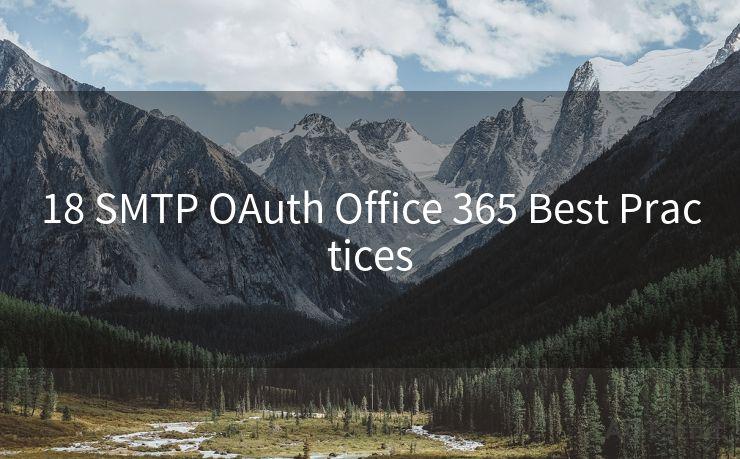18 SMTP OAuth Office 365 Best Practices




Introduction
In today's digital age, secure email communication is paramount for businesses. When it comes to integrating systems with Office 365, using SMTP with OAuth authentication emerges as a robust and secure method. In this article, we'll explore the best practices for leveraging SMTP, OAuth, and Office 365 to ensure seamless and secure email exchanges.
1. Understanding SMTP and OAuth
SMTP (Simple Mail Transfer Protocol) is a standard for email transmission on the internet. OAuth, on the other hand, is an open standard for access delegation, commonly used as a way for applications to access user accounts without using passwords. Combining these two technologies with Office 365 brings a new level of security and convenience to enterprise email communications.
2. Why Use OAuth with SMTP?
Traditional SMTP authentication often relies on username and password, which can be prone to security risks. OAuth provides a more secure method by allowing applications to access user data without exposing the user's credentials. This significantly reduces the risk of credential theft or misuse.
3. OAuth Configuration in Office 365
Configuring OAuth in Office 365 involves several steps, including registering your application, setting up permissions, and obtaining access tokens. It's crucial to follow Microsoft's official documentation to ensure a smooth and secure setup.
4. Best Practices for SMTP and OAuth with Office 365
a. Keep Tokens Secure: OAuth tokens are sensitive and must be kept secure. Use secure storage mechanisms and transmission protocols to protect these tokens.
b. Minimize Token Scope: Only request the necessary permissions when obtaining OAuth tokens. This minimizes potential risks if a token is compromised.
c. Regularly Renew Tokens: Access tokens expire, so it's important to have a mechanism to regularly renew them to ensure uninterrupted service.
d. Monitor and Audit: Regularly monitor your OAuth token usage and audit any suspicious activities.
e. Use Secure Connections: Always use TLS encryption when sending emails via SMTP to ensure data privacy.
5. Benefits of OAuth with SMTP
Using OAuth with SMTP brings several benefits, including enhanced security, better control over access permissions, and improved user experience through single sign-on capabilities.
6. Troubleshooting and Support

When implementing OAuth with SMTP, you might encounter issues such as token expiration, scope problems, or connection errors. It's essential to have a robust troubleshooting and support system in place to quickly resolve these issues.
🔔🔔🔔
【AOTsend Email API】:AOTsend is a Managed Email Service for sending transactional emails. Support Email Types: reminders, authentication, confirmations, notifications, verification codes, invoices, password resets, account activations, billing statements, two-factor authentication (2FA), and one-time passwords (OTP) emails, etc. $0.28 per 1000 Emails. 99% Delivery, 98% Inbox Rate.
You might be interested in:
Why did we start the AOTsend project, Brand Story?
What is a Managed Email API, How it Works?
Best 25+ Email Marketing Platforms (Authority,Keywords&Traffic Comparison)
Best 24+ Email Marketing Service (Price, Pros&Cons Comparison)
Email APIs vs SMTP: How they Works, Any Difference?
Conclusion
Integrating SMTP with OAuth and Office 365 brings numerous advantages to enterprises, especially in terms of security and convenience. By following the best practices outlined in this article, organizations can ensure smooth and secure email communications, protecting sensitive data and enhancing the overall user experience.




Scan the QR code to access on your mobile device.
Copyright notice: This article is published by AotSend. Reproduction requires attribution.
Article Link:https://www.mailwot.com/p5803.html



